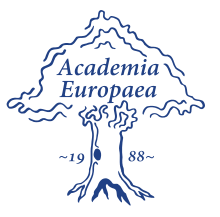Speaker
Description
Rotation, a collective phenomenon that was found in excited atomic nuclei, may induce important changes in the nucleus. The centrifugal force breaks the pairing between nuclei, and the nucleus starts behaving as a liquid. When rotational speed increases, the nucleus changes its shape, from spherical or slightly prolate, to the oblate one, and at some critical value, the nucleus may even undergo a sudden change of shape – from oblate to very elongated prolate. This is phenomenon in known as Jacobi shape transition. The rotation causes also that the nuclei, even at lower excitation energy, might become triaxial.
I will discuss the results of research on the phenomenon of rapid change of shape of the rotating nucleus from the flattened to the elongated ellipsoid, so called nuclear Jacobi transition. Such studies were carried out in the A=40 and A=90 nuclei, by measuring the gamma decay of another nuclear phenomenon - the Giant Dipole Resonance (GDR).
In addition, I will discuss the first results from the studies of other collective phenomena (Giant Quadrupole Resonance, Pygmy Dipole Resonance) carried out at the new proton beam facility Cyclotron Center Bronowice in Krakow.

